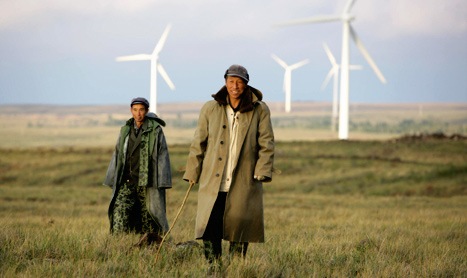Global installed wind power capacity continued to grow in 2011, albeit at a slightly lower rate than in 2009 and 2010, according to new research conducted by the Worldwatch Institute for its Vital Signs Online service. The world now has approximately four times the installed wind capacity that it did in 2005, reflecting the combined effects of falling prices, improved technology, global investment, and various incentive programs. China led the way with a 43 percent share of global capacity additions in 2011, followed by the United States at 17 percent, India with almost 7 percent, and Germany at 5 percent, writes report author and Worldwatch’s Climate and Energy Program Manager Mark Konold.
“China continues to lead the world in wind capacity additions, having increased its capacity a remarkable 40 percent since 2010,” said Konold. “But a gap remains between this installed capacity and the amount of wind power that is actually available for use in the country. Because of grid connection challenges and other issues, China is struggling to use all of the electricity generated by its turbines.”
Despite large increases in installed wind power capacity, several Chinese provinces, including Inner Mongolia and Gansu, have actually lost a significant portion of their generation capacity because of technical problems. Over the next five years, China plans to invest more than US$400 billion to make improvements to its electrical grid that will enable it to fully integrate its total installed wind capacity by 2015.
In 2011, the United States accounted for approximately 17 percent of global wind power capacity additions. Although the country generated 27 percent more electricity from wind in 2011 than in 2010, wind power still accounts for less than 3 percent of total U.S. power generation, according to the report. Konold credits much of the growth in U.S. wind power capacity to the federal Production Tax Credit (PTC), which helped to finance approximately 4,000 megawatts of new capacity by reducing corporate income tax by 2.2 cents for every kilowatt-hour produced. But if the PTC is not extended beyond its scheduled expiration date at the end of this year, he cautions, the industry could be negatively affected.
The report also discusses wind power developments in the European Union, where Germany regained its position as regional leader for installed capacity. Currently, wind accounts for almost 8 percent of the country’s electricity consumption. Although Spain added only a third of total EU capacity since 2008, wind power accounts for almost 16 percent of the country’s electricity consumption. Economic instability has had some negative impacts on European wind power, however, pushing future growth projections down and potentially hampering investment.
Worldwide, wind power prices fell to $1.2 million per megawatt in the first half of 2011, mainly because of improvements in supply chain efficiency and economies of scale. Competition from Chinese manufacturers and their excess capacity to build machines and flood the market also played a role. In addition, the capacity factor of wind turbines (the ratio of actual output to nameplate capacity) continues to rise as better technologies enter the market, further driving down turbine costs. Combined, these factors are expected to bring down the cost of wind energy 12 percent by 2016, making onshore wind cost competitive with coal, gas, and nuclear power.
“Global wind power growth looks very strong and is on a continued rise, largely because of China’s incredible level of investment,” said Konold. “Withhold that, and the picture looks more muddled. Developed economies are not reaching their fullest potential due to financial and policy uncertainty, and many developing economies are running into technical problems, despite slightly stronger growth in wind power capacity. Although continued growth in wind power won’t be as strong as it could be, as the supply increases and prices fall, wind energy is quite likely to continue its upward trend.”
